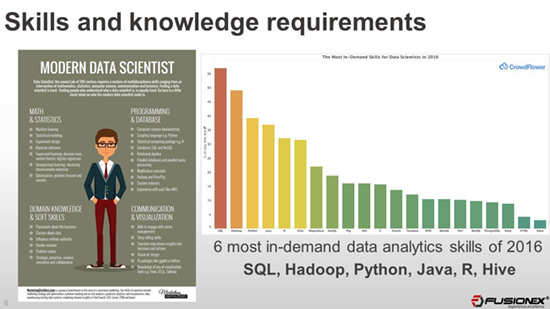26 July 2016
DBIT students learn why Big Data Analytics is one of the best career choices they can make
On 1st July 2016, my lecturer invited Mr Edward Lim, Regional Director of FusionEx to give us a talk on “Careers in Data Analytics”. Mr Lim’s company is a leading Big Data & Advanced Analytics player in the region. During the talk, he shared with us many interesting examples of work that his company and other data analytics consultancy companies may engage in.
Data Analytics has been termed one of the “sexiest jobs of the 21st century” so we were curious to find out why and how it is so, from our guest speaker who has extensive experience in this area.

SKILLS AND KNOWLEDGE WE NEED
One of the first topics he touched on during the talk was about the top 6 skills that companies look for in the Data Analytics industry. The top 6 skills are SQL, Hadoop, Python, Java, R and Hive. I feel that I am so lucky as I got to learn SQL in my Year 1! Even though we may not get to cover skills like Hadoop and Python in our course, that’s alright because there are a lot of learning materials online which we can use to pick up these skills ourselves.
Indeed, as a Diploma in Business Information Technology (DBIT) student, we get to learn a lot of different skills and experience using different tools. For example, in Year 1, I learnt about what are Database Management Systems and how to use SQL statements. In Year 2, I am taking a Business Intelligence module which teaches me how to use a tool called Tableau, which allow us to create beautiful and impressive-looking data visualizations. I also get to use SPSS tools, which is taught in the Social Media Analytics module.
All these modules and tools are actually useful if we want to become a Data Analyst.

EXAMPLES OF COMPANIES THAT ARE HIRING AND USE DATA ANALYTICS
- Fusionex
- Deloitte
- Taobao
- Uber
- Facebook
Next, Mr Edward quoted us examples of companies that are hiring people with Data Analytics skills. He shared with us why and how these companies make use of Data Science in their businesses and are willing to pay huge salaries to people with Data Analytics skills.
One example that was familiar to me is the China e-commerce company Taobao. I am a fan of Taobao, and I do recall that whenever I am looking at a product, the Taobao app will always recommend me another product which I am likely to be attracted to. Each time this happens, I often wonder, how did that happen?
My doubts were clarified when Mr Edward explained that Taobao uses Data Analytics on its platform to analyse customers’ behaviours. By analysing the history of customers’ purchases and browsing patterns, Data Analytics helps Taobao to understand that customers who buy this product, typically buy this other product too. Thus, when a user is looking at a product, the app is intelligent enough to automatically recommend a second product that the user is likely to be interested in too.

THE DIFFERENT JOB ROLES IN DATA ANALYTICS
Next, he shared with us about the different job roles, the skills needed for the roles as well as the tools they used. However, he also stressed that these roles are not entry-level as we need to have few years of experience in order to get to that role.
In order to become a Data Scientist, we have to be a well-rounded person. Not only must we be good at Programming, we must also be good at Statistics, Database and be good communicators. Apart from Data Scientists, we can also become Data Engineers, where the focus is on retrieving and storing data and making data available for Data Scientists and Data Analysts to work on.
I feel that these job roles are actually quite unique and the industry is actually willing to pay for people who have these kinds of skills. So, with all these skills, I believe it would be much easier for us to secure well-paying and interesting jobs in future!

THE DIFFERENT TYPES OF ANALYTICS
Lastly, he explained to us the different types of analytics – Descriptive, Diagnostic, Predictive and Prescriptive. For example, Predictive Analytics requires a mixture of statistical, modelling and data mining to study data to help company predict future trends. I learned that companies such as Uber and Grab use a lot of Predictive Analytics, to predict demand for their services and maximise their profits. .
After this talk, I learned that there are different types of analytics and different problems require different types of analytics to solve. It’s wonderful to be able to utilise the entire spectrum of Data Analytics till the Prescriptive Analytics portion, however, due to resource constraints, some companies may stop at Descriptive Analytics. Nonetheless, I think that, no matter what type of analytics a company uses, any knowledge gained from the Analytics tools is still very useful and can benefit the company a lot.
AN EYE-OPENING EXPERIENCE
This talk is definitely an eye opening experience for both me and my friends. We gave Mr Lim a goodie bag as a token of our appreciation and all of us went back with a much stronger understanding of what are the careers in Data Analytics which we knew so little before. It would certainly help us in making better decisions on our career choices in future!
This article is written by Ng Shei Er, a Year 2 student from the Diploma in Business Information Technology (DBIT).
Top